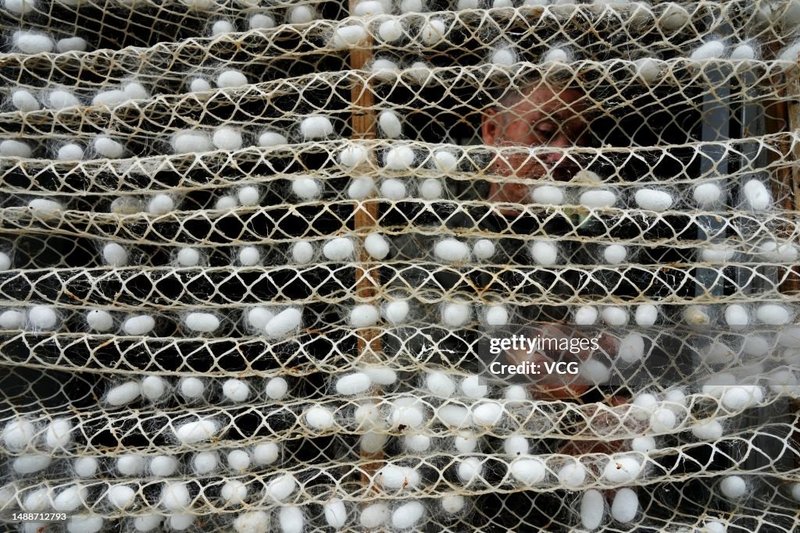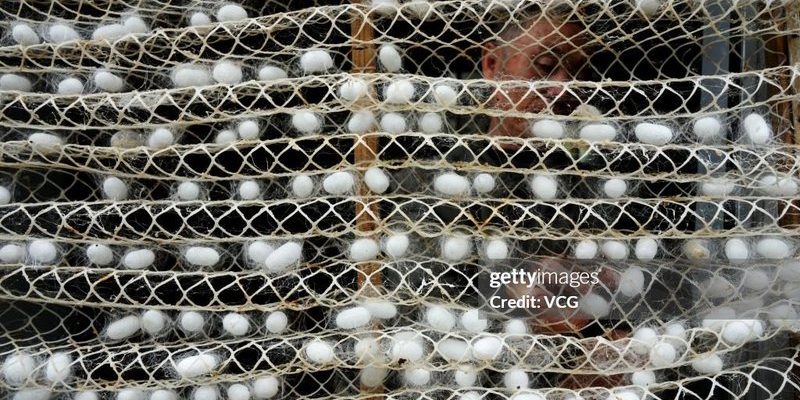
So, if you’re venturing into the world of sericulture—raising silkworms for silk—understanding the right tools for harvesting and handling those cocoons is crucial. Just like any craft, having the right gear can make all the difference. In this article, we’ll explore the best tools to help you manage this process smoothly while preserving the quality of your cocoons.
Let’s dive into the essential tools and techniques that will make your silk harvesting journey not only efficient but also enjoyable!
Understanding Silkworm Life Cycle
Before we jump into the tools themselves, it’s essential to have a grasp of where these cocoons come from. The silkworm goes through several stages: egg, larva, pupa, and finally the adult moth. The cocoon is formed during the pupal stage, where the larvae spin a protective layer around themselves.
This stage usually lasts about 2-3 weeks, depending on the temperature and conditions. After this period, if left untouched, the moth will emerge from the cocoon and break it apart. However, for silk production, the cocoons are harvested just before this happens. Timing is everything! Knowing when to harvest is crucial; this is where the right tools come into play.
Essential Harvesting Tools
When it comes to harvesting silkworm cocoons, having the right tools can transform your experience from cumbersome to smooth as silk. Here are some must-haves:
- Cocoon Harvesting Knife: This is your primary tool for cutting the cocoons off the silkworm rearing trays. It needs to be sharp and easy to maneuver to avoid damaging the delicate cocoons.
- Small Basket or Container: A lightweight basket helps transport the harvested cocoons to your processing area without squishing them. Think of it as your trusty sidekick!
- Gloves: Wearing gloves can protect the cocoons from oils on your skin and ensure better handling. Plus, it adds a touch of professionalism to your harvesting.
- Measuring Scale: To maintain quality and consistency, weighing the cocoons is crucial. A digital scale works best for precision.
Having these tools on hand sets a solid foundation for your harvesting process. Investing in quality tools will make your work easier and preserve the integrity of your cocoons.
Handling and Processing Tools
Once you have harvested the cocoons, the next step is to handle them with care. Here’s what you’ll need:
- Steamer: To kill any live moth inside the cocoon, a steamer is a great tool. This keeps the silk intact and prevents further damage during processing.
- Unraveling Tool: This tool helps you carefully unwind the silk from the cocoon without breaking it. It’s like a tiny crown jewel in your toolkit!
- Drying Rack: After steaming, cocoons need to dry properly. A simple rack can help to keep them spaced out for better airflow.
Each tool plays a vital role in preserving the quality of the silk. Handling cocoons can be delicate work, but the process becomes manageable with the right gear.
Importance of Timing in Harvesting
Timing can truly make or break your silk experience. If you wait too long to harvest, the moth might emerge, ruining the cocoon. However, if you harvest too early, you might not get the best quality silk. Here’s how you can gauge when it’s time:
1. Visual Check: Look for cocoons that are fully formed. They should be round and firm, not soft or squishy.
2. Temperature Awareness: Temperature affects the lifecycle. When it’s warmer, silkworms will mature faster. Keep an eye on temperature changes.
3. Weight: A mature cocoon will feel heavier than an immature one. A small digital scale can help you get the perfect timing down!
By mastering the art of timing, you can enhance your silk production and make sure that every cocoon meets your quality standards.
Maintaining Quality During Harvest
You might be wondering, “How can I ensure my cocoons remain top quality?” Quality control starts the moment you begin harvesting. Here’s how to keep the integrity of your cocoons intact:
– Gentle Handling: Always handle the cocoons gently to avoid crushing them. Remember, they’re delicate!
– Clean Tools: Ensure your harvesting tools are clean. A little dirt or oil can ruin the silk quality.
– Immediate Processing: Try to process your cocoons as soon as possible after harvesting. The longer they sit unprocessed, the more prone they are to damage.
By keeping these tips in mind, you can ensure that your silk quality remains high.
Storing Silkworm Cocoons
After harvesting, proper storage is essential to maintain the quality of your silkworm cocoons. Here’s what to consider:
1. Cool and Dry Location: Cocoons should be stored in a cool, dry place away from direct sunlight. Humidity can cause mold or spoilage.
2. Breathable Containers: Use breathable bags or boxes that allow air circulation. This prevents moisture buildup and keeps your cocoons fresh.
3. Regular Checks: Every few weeks, check on your stored cocoons for any signs of damage or pests. It’s like a little health check-up!
Proper storage not only preserves quality but also gets you ready for when it’s time to turn those cocoons into silk.
Best Practices for New Silkworm Farmers
If you’re just starting your journey into sericulture, here are some best practices to keep in mind:
– Educate Yourself: Read up on silkworm rearing and handling. The more you know, the easier the process will be.
– Join a Community: Connect with other silkworm farmers. Sharing experiences can help you troubleshoot common issues and enhance your skills.
– Be Patient: Silk farming is an art that takes time to master. Don’t rush through the steps; take your time to understand the entire process.
With practice, you’ll build confidence and skill in handling silkworm cocoons!
Harvesting and handling silkworm cocoons can be a rewarding process when done with the right tools and knowledge. From the essential harvesting knife to understanding the timing of your harvest, each step is significant in creating beautiful silk. Remember to handle your cocoons gently and store them properly to maintain their quality.
As you embark on this silk journey, armed with the right tools and insights, you’ll find joy in every stage of the process. Happy harvesting!

